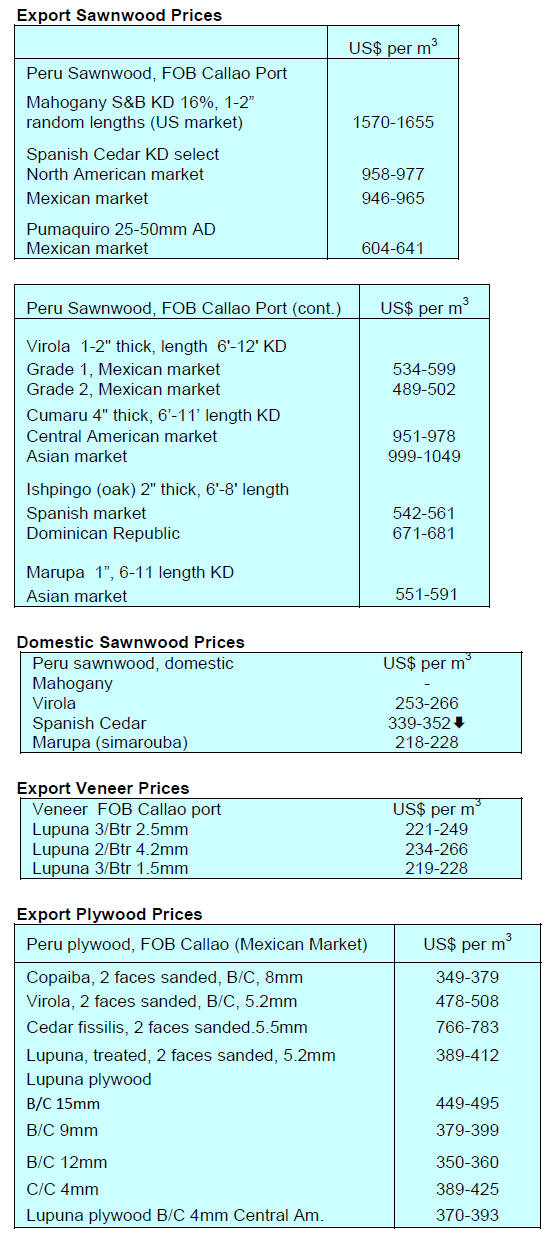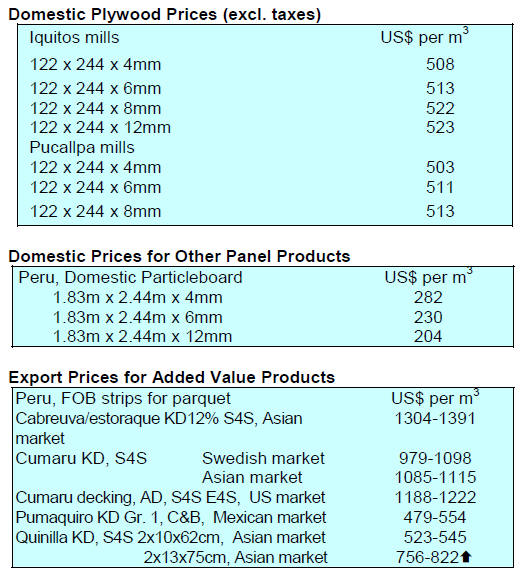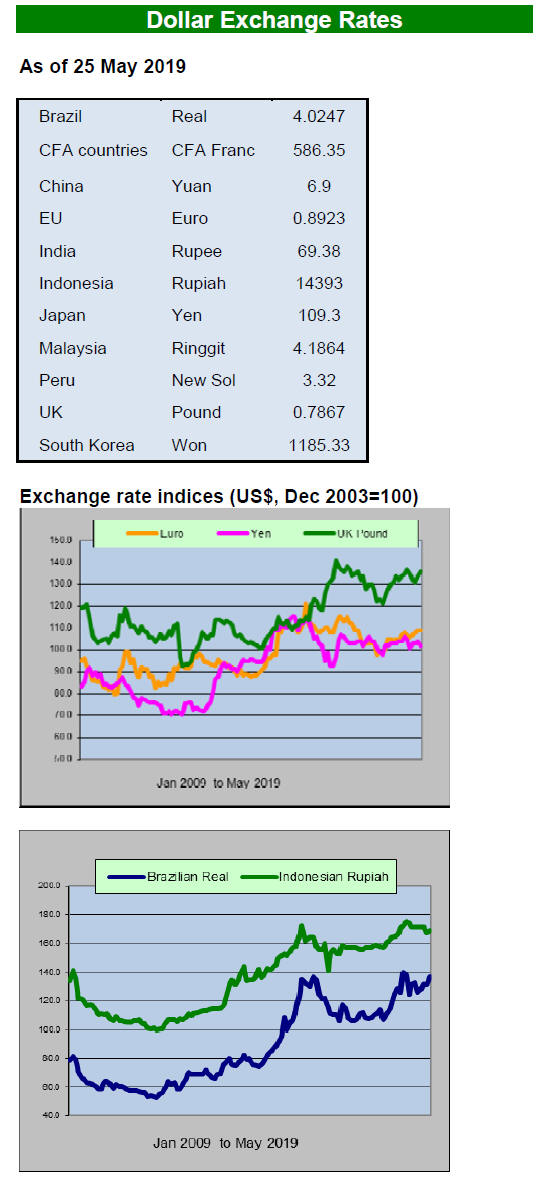3.
MALAYSIA
MTCC certification consultation
The Malaysian Timber Certification Council (MTCC) has
opened for public consultation their Draft Malaysian
Criteria and Indicators for Forest Management
Certification or MC&I Forest Management.
The Enquiry Draft, which is a revised and merged
standard that combines the requirements of both the
MC&I (Natural Forest) and MC&I (Forest Plantation.v2),
was finalised by the Standards Review Committee (SRC)
at its Fourth Meeting in February 2019.
The draft MC&I Forest Management Certification
maintains the similar format as the previous standards with
updated requirements through feedback received from the
first public consultation as well as the key requirements of
the ISO 17021-1 Conformity assessment – Requirements
for bodies providing audit and certification of management
systems – Part 1: Requirements, and the PEFC benchmark
standard on sustainable forest management. The major
changes to the revised MC&I Forest Management
Certification are summarised below:
 Incorporation and streamlining of the
Incorporation and streamlining of the
requirements under Principle 10 of the MC&I
Forest Plantation.v2 into the corresponding
Principles 1-9 of the MC&I Forest Management
to reduce redundancy. All the requirements in the
standard apply to both natural forest and forest
plantation, with requirements that apply only to
natural forest or forest plantation clearly
specified.
 Inclusion of requirement on conversion of
Inclusion of requirement on conversion of
degraded forest to forest plantation that is not
subject to the cut-off date of 31 December 2010
for conversion of natural forest to other land uses.
 Stronger requirements on social aspects
through
Stronger requirements on social aspects
through
the incorporation of all core ILO Conventions
and the principle of gender equality.
 Incorporation of requirements that provide
Incorporation of requirements that provide
guidance for internal audit and management
review and improvement.
 Improved clarity on the requirements for
Improved clarity on the requirements for
communicating claims from certified areas.
 Stakeholders are invited to submit comments
Stakeholders are invited to submit comments
and/or proposals for amendments to the Enquiry
Draft, providing justification for the proposals as
well as the suggested wordings for the proposed
changes.
The Enquiry Draft is available at: http://mtcc.com.my/wpcontent/
uploads/2019/05/LAMPIRAN-IB-Enquiry-Draft-MCIFMC.
docx
See: https://mtcc.com.my/public-consultation-on-malaysiancriteria-
and-indicators-for-forest-management-certificationenquiry-
draft/
MTCC suspends certification certificate for Kedah
A press release from the Malaysian Timber Certification
Council (MTCC) gives details of the suspension of forest
management certification for the Kedah State forest
management Unit (FMU).
An announcement on the MTCC website reads “ (The)
Certificate for Forest Management issued to the Kedah
State FMU (FMC 0003) against the requirements of
MC&I(Natural Forest) have been suspended with effect
from 8 May 2019 until further notice.
SIRIM QAS International Sdn. Bhd. made this decision
after the Kedah State FMU failed to close a major
Corrective Action Request (CAR) following the second
surveillance audit carried out by SIRIM QAS International
Sdn. Bhd. It is required that any major non-conformity
raised must be adequately addressed within the given time
for the FMU to maintain its certification.
In light of the above development, all logs sourced from
the Permanent Reserved Forests (PRFs) in the Kedah State
FMU beginning 8 May 2019 (i.e. all logs accompanied by
Removal Passes issued dated 8 May 2019 and onwards)
will not be recognised as PEFC certified material under
the Malaysian Timber Certification Scheme (MTCS).
Nevertheless, the logs originating from Kedah State FMU
can be accepted as PEFC Controlled Sources, provided
that a due diligence system has been implemented and
does not involve sourcing of logs from conversion areas.”
See: https://mtcc.com.my/suspension-of-forest-managementcertificate-
for-kedah-state-fmu/
High Conservation Value training for Sarawak
foresters
As Sarawak moves towards having all its Forest
Management Units (FMUs) certified by 2022, foresters
experienced in High Conservation Values (HCVs) Forests
identification, management and monitoring practices will
be in high demand.
The Sarawak Forest Department, the Sarawak Forestry
Corporation (SFC), the Sarawak Timber Association
(STA) and WWF-Malaysia have collaborated to produce a
set of HCV training modules to equip foresters to
contribute to the State objective.
A field testing workshop to obtain feedback on draft
modules took place at the Samling Central Base Camp and
Gerenai FMU in Upper Baram, Miri Division, in early
May. Participants gained valuable feedback from those
with knowledge or experience on HCV. The HCV
modules will undergo a stakeholder consultation in June.
Sabah export update
The latest statistics released by the Statistics Department
of Sabah show exports of major timber products for the
first three months of 2019 were worth RM265 million.
Of the total, RM59.4 million was from sawnwood exports,
(22.4% of total), RM188 million from plywood exports
(70.5% of the total) and almost RM18 million from
exports of veneer.
The volume of sawnwood exports in the first quarter was
28,409 cu m with China being the main buyer (10,200 cu
m) followed by Taiwan P.o.C (7,274 cu m) and Thailand
(1,856 cu m).
For plywood, the total volume exported was 86,667 cu m
with most being shipped to Japan (16,429 cu m) followed
by South Korea (14,591 cu m) and the USA (13,570 cu
m). For veneer, exports were 9,466 cu m and the main
buyers were South Korea (3,305 cu m), Japan (2,251 cu
m) and the Philippines (1,993 cu m).
Plywood prices
Traders based in Sarawak reported the following export
prices in April:

4.
INDONESIA
Trade War could mean a flood
of exports to Indonesia
Sanny Iskandar, Deputy of Regional Economic
Development in the Indonesian Chamber of Commerce,
said the trade dispute between the United States
and China is expected to impact Indonesia’s export and
domestic trade. He said China may become more active in
promoting sales into Indonesia and it may also eat away at
market share held by Indonesia in overseas markets.
Sanny warned a surge in Chinese imports could disrupt
domestic sales as local industries are not prepared to face
the tough competition from Chinese imports, an issue of
relevance to domestic furniture makers.
Huge economic value in non-timber forest products
and environmental services
Minister of Environment and Forestry, Siti Nurbaya
Bakar, said that a recent study suggest most of the
economic value from forests is in non-timber forest
products and environmental services.
Because of this the ministry intends to encourage further
development non-timber forest products so forestry
becomes a multi-business sector integrating upstream to
downstream activities.
In related news, a local company, Shopee Indonesia, is
working with the to market non-timber forest products and
will also provide training to small, micro and medium
enterprises (MSMEs) commercialising non-timber forest
products.
The Executive Director of the Association of Indonesian
Forest Concessionaires (APHI), Purwadi Soeprihanto, said
the Association urges the government to review incentives
for entrepreneurs involved in the non-timber forest product
sector.
See: https://ekonomi.bisnis.com/read/20190510/99/921098/klhkdorong-
pengembangan-komoditas-hutan-nonkayu
and
https://ekonomi.bisnis.com/read/20190510/99/921067/klhkgandeng-
shopee-pasarkan-produk-hutan-nonkayu
Industry calls for review of regulations to stimulate
exports
With the Indonesian election concluded the private sector
is looking forward to more export friendly government
policies. The Executive Director of APHI, Purwadi
Soeprihanto, said the export value chain for forest
products needs to be optimalised.
This can be achieved, he said, if the new government can
overhaul the procedures for licensing of forestry
entrepreneurs by expanding the One Single Submission
(OSS) across the country. According to Purwadi, while the
One Single Submission works well in the capital, permit
applications in the regions still rely on the manual system.
In related news, Bambang Supijanto, Chairman of the
Indonesian Wood Panel Association, identified some
issues that he hopes the government can address to support
the Indonesian wood panel and veneer industry: first,
remove VAT on roundwood and secondly set the
reforestation funds payment in Rupiah not US dollars as at
present.
The other issues that should be addressed are facilitating
access to credit lines with commercial banks and
exemption of import duty on manufacturing machinery
important for industry restructuring.
https://ekonomi.bisnis.com/read/20190521/99/925460/pemerinta
han-baru-diharap-hapuskan-ppn-kayu-bulat
Plans to accelerate replanting in degraded forests
The Ministry of Environment and Forestry (KLHK), the
Association of Indonesian Forest Concessionaires (APHI)
and other stakeholders intend to develop plans to
accelerate the replanting in degraded forests.
APHI Chairman, Indroyono Soesilo, said that the use of
drones for seeding may be a viable option especially in
areas that are difficult to access. The ministry has targeted
planting 230,000 hectares this year.
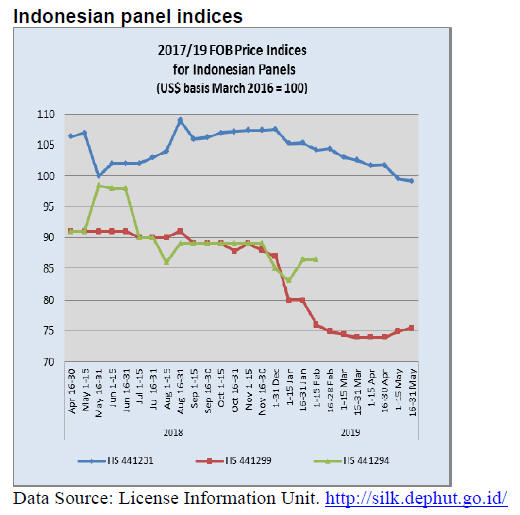
5.
MYANMAR
Industries closer to forest create
employment for
communities
A member of parliament has proposed allowing wood
processing industries to be established close to production
forests to create employment opportunities for local
people. This will also help in raising the awareness of rural
communities in the development and protection of forest
resources.
Currently, the location of wood processing industries is
controlled as part of the government’s efforts to ensure
illegal timber does not enter the supply chain. Exportoriented
wood industries are mostly located in Yangon but
there are many small scale sawmills operating in rural
areas.
Myanmar Reforestation and Restoration programme
proposed
The Myanmar Timber Merchants Association was one of
the agencies visited by a World Bank delegation. The
delegation also met with government and other non-
Government organizations.
The forestry sector in Myanmar is an important economic
sector and historically timber exports consistently ranked
among the top-five exports. Today, despite reduced timber
harvest and lower revenue from forestry, the sector still
generates over 8% of government revenues and is a vital
supplier of non-market forest products such as fuelwood
and non-wood forest products.
There are plans for a 10-year Myanmar Reforestation and
Restoration Programme (MRPP) supported by the World
Bank and the Forest Department will be the implementing
agency.
This project has four components; community forestry and
community enterprises, strengthening of protected areas,
creating an enabling environment for the MRPP and
institutional investments in project management,
monitoring and evaluation.
US/Japan alliance could advance shared aims in
Myanmar
A recent report “Forging a Stronger Economic Alliance
between the United States and Japan” proposes strategies
the two countries can implement to improve their
economic partnership in third countries and advance
shared interests. Myanmar was a case-study.
The report says “By strengthening infrastructure, human
capacity and governance practices, Myanmar can become
a stronger, more democratic, more stable nation, better
able to negotiate relations with neighbouring countries on
its own terms.”
See: https://www.csis.org/analysis/article-ii-mandate-forgingstronger-
economic-alliance-between-united-states-and-japan
Third Myanmar-EU Economic Forum set for June
The European Chamber of Commerce in Myanmar will
host the Third Myanmar-EU Economic Forum in June.
Myanmar and European business communities will have
the opportunity to interact and more than 500 participants
are expected. This annual event provides an opportunity
for business people and high level government officials to
discuss developments in the business climate.
Foreign investments continue pour into Myanmar
According to the Myanmar Directorate of Investment and
Companies Administration (DICA) over US$2.5 billion in
foreign investments flowed to Myanmar up to May this
fiscal year. The transportation and communications sectors
topped the list of foreign investment.
In 2013, in cooperation with Japan International
Cooperation Agency (JICA), the Myanmar Investment
Commission developed its foreign investment policy and
this was implemented in 2014.
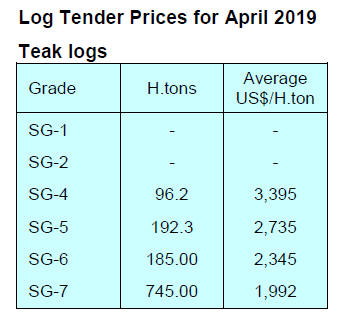
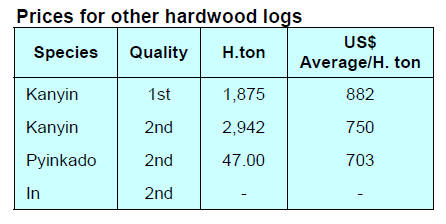
6. INDIA
Industrial output slips but GDP holds
up well
Data from the Indian Central Statistics Office is showing
that, month on month, the industrial output index fell
slightly in March, the first time in nearly two years. The
manufacturing sector accounts for over 75% of the
industrial production index and it was the decline in the
manufacturing sector that pulled down the index.
In other news, GDP growth is holding up well with the last
quarter 2018 data showing a 6.6%, expansion.
See: https://data.gov.in/catalog/all-india-index-industrialproduction-
base-2011-12100
GST adjusted to boost affordable homes sector
At its mid-March meeting the GST Council discussed the
implementation of recommendations for lower GST rates
of 1% in case for affordable houses and 5% on
construction of houses other than affordable house. The
GST Council formally reduced the GST rates for underconstruction
flats and affordable housing to 5% and 1%.
The Council also increased the so-called ‘carpet area’
defining affordable homes as up to 90 sq. m from 60 sq.
m. A move aimed at attracting more buyers. This changes
are aimed at giving a boost to the affordable homes sector
and are a welcome move which could lift wood product
consumption.
See:
http://gstcouncil.gov.in/sites/default/files/34th_GST_Council.pdf
Booming housing growth in Southern cities
The Vestian Quarterly Newsletter has reported that the
pace of new residential launches in the three southern
cities of Bengaluru, Hyderabad and Chennai in the first
quarter of this year were up around 17% on the last quarter
2018.
The authors of the article interpret this as signaling finally
that real estate companies have adjusted to the recent
regulatory changes and are increasingly active. The
Vestian newsletter notes recent launches were mainly in
the affordable and mid-price market segment.
See:
https://housing.com/news/tag/vestian-quarterly-newsletter/
Plantation teak prices
Since the third quarter 2018 C&F prices for imported
plantation teak have not changed and this is largely
because the US dollar/rupee exchange rate has been stable.
Analysts write that the current rise in oil prices may feed
into higher freight costs which could result in a downward
pressure on prices in the face of the steady but flat demand
in India.
C&F rates for Indian ports are within the same range as
given earlier.
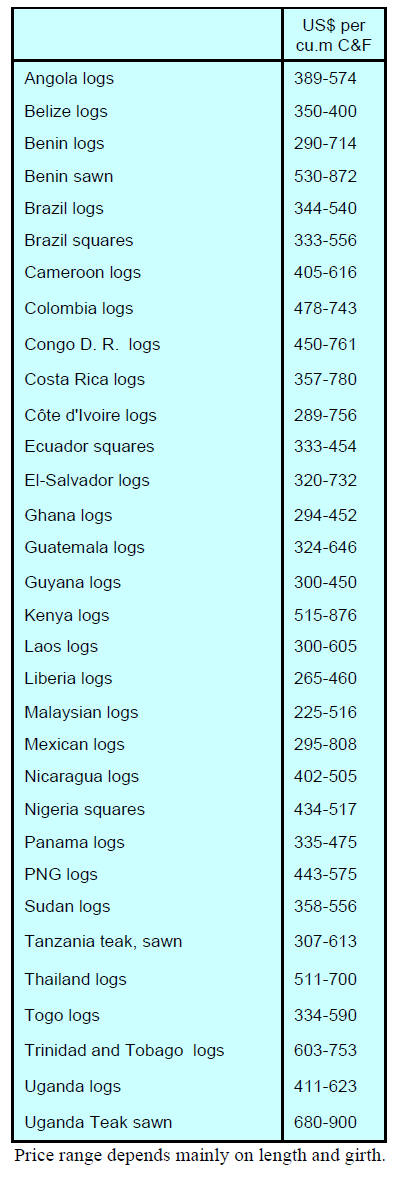
Locally sawn hardwood prices
Demand for imported hardwoods remains steady and in
recent weeks ex-mill prices for locally milled sawnwood
have risen slightly.
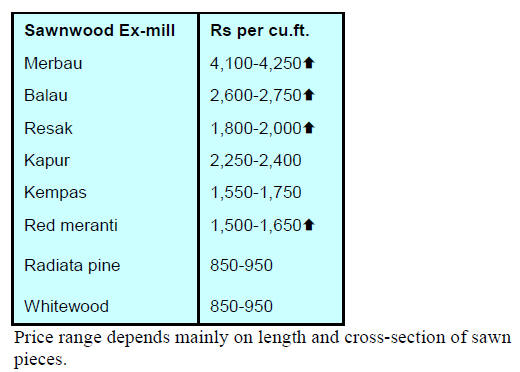
Myanmar teak prices
There has been a rise in demand for imported Myanmar
teak sawnwood and this has created an opportunity for
price increases.
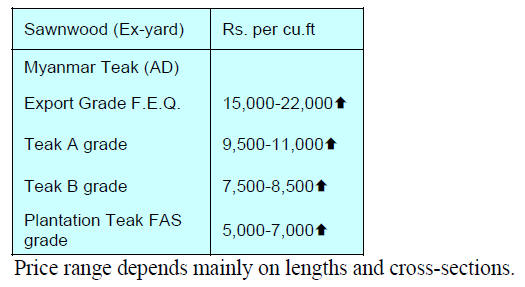
Sawn hardwood prices
The firming demand for sawnwood has lifted prices for
imported European and US sawn hardwoods.
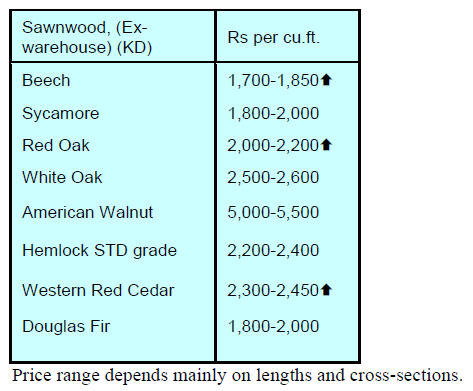
Plywood prices
Plywood prices are unchanged.

7. BRAZIL
Santa Catarina wood, pulp and
paper products rise
15%
Santa Catarina, in the southern region of Brazil, is known
for its vibrant timber sector. In 2018, the value of forestry
sector output in Brazil was just over R$14 billion of which
about 10% was from Santa Catarina.
According to the Santa Catarina Association of Forest
Companies (ACR) in 2018 forest plantations extended to
829,000 ha. of which 70% was pine, the balance
eucalyptus. At the beginning of this year there were almost
6,000 companies in the direct and indirect timber sector
and they provide thousands of direct jobs.
The State Department of Agriculture recognises the
forestry sector is a major exporter as in 2018 export
shipments of wood, pulp and paper products expanded
15% year on year contributing revenues of US$1.4 billion.
IBA – exports firm but domestic consumption weak
The IBÁ Bulletin reports a 2.3% increase in wood product
export values in the first quarter of 2019 compared to the
first quarter 2018. In the first three months of this year
business negotiations with importers were valued at
US$2.8 billion.
Among the various products, exports of pulp expanded
3.3%. The main market for pulp was China with a 39% of
exports (US$ 856 million). The wood-based panel export
market recorded growth of 13% with revenues at US$44
million compared to the same period of 2018. The main
destinations for its exports were Latin American countries.
In contrast, IBÁ says domestic consumption of woodbased
panels grew only 1.1% in the first quarter 2019
compared to the same period of 2018, a reflection of the
slow revival of the Brazilian economy. About 1.6 million
cubic metres were consumed, some 17,000 cubic metres
more than the first three months of 2018.
Export update
In April 2019, the Brazilian exports of wood-based
products (except pulp and paper) declined 19% in value
compared to April 2018, from US$286.6 million to
US$232.9 million.
The value of April 2019 pine sawnwood exports dropped
10.5% compared to April 2018, from US$48.8 million to
US$43.7 million. In terms of volume, exports fell 9% over
the same period.
Exports volumes of tropical sawnwood also fell (-8%) in
April from 46,200 cu.m in April 2018 to 42,500 cu.m in
April 2019. There was an even sharper decline in export
values which dropped 14% from US$20.2 million to
US$17.3 million in April this year.
The negative trend in exports continued with plywood.
Pine plywood exports fell 41% in value in April 2019 in
comparison with April 2018, from US$68.3 million to
US$40.0 million. However price for plywood held up
better as export earnings dropped only 27% over the same
period, from 198,500 cu.m to 145,000 cu.m.
Tropical plywood exports are now very small and in April
there was a drop in the value and volume of exports from
13,900 cu.m (US$6.1 million) in April 2018 to 7,500 cu.m
(US$ 2.8 million) in April 2019.
Wooden furniture exports also took a hit in April with
earnings falling from US$45.3 million in April 2018 to
US$42.8 million in April 2019.
Three southern states – 85% of exports
Furniture production in February 2019 was 34 million
pieces, down 4% compared to January of the same year.
Year-to-date, over the same period of the previous year,
volume production increased 1.2%.
According to the Brazilian Institute of Geography and
Statistics (IBGE) accumulated furniture production over
the past twelve months declined 1.5% compared to the
previous 12 month period. On the other hand, national
manufacturing output expanded.
Furniture exports totalled US$137 million in the first
quarter of 2019, up 1.6% compared to the same period in
2018. Of this total, exports of furniture to the United
States stood out with a 34% share. This was followed by
the United Kingdom, an 11% share and Uruguay with 8%
of total exports.
The three southern states are the largest furniture exporters
in Brazil. Altogether, Santa Catarina (41.3%), Rio Grande
do Sul (30.4%) and Paraná (13.9%) accounted for just
over 85% of all Brazilian furniture exports in the first
quarter of 2019.
For more see: http://www.brazilianfurniture.org.br/
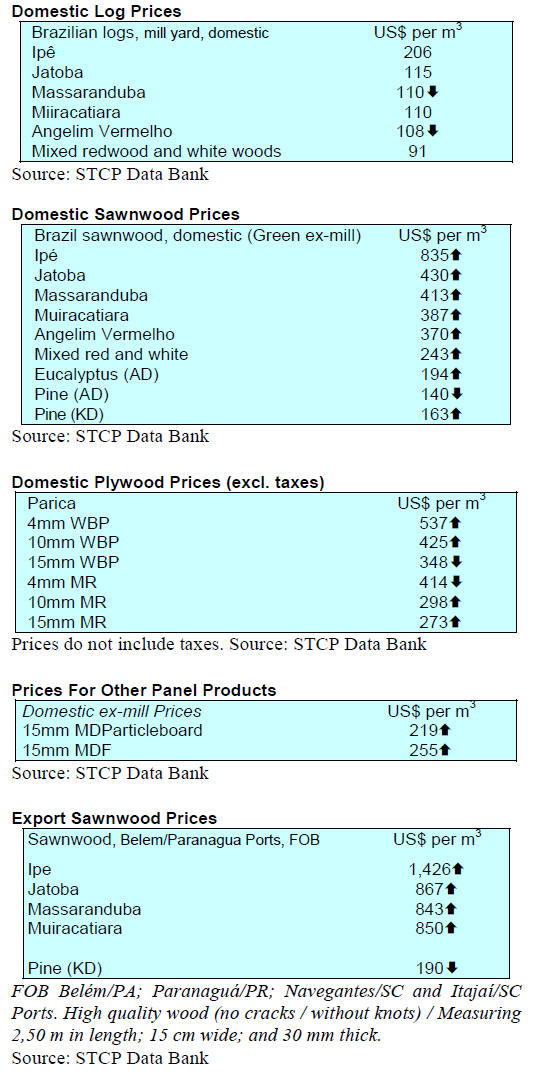
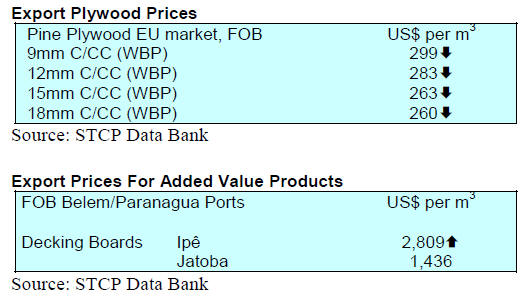
8. PERU
New operation guidelines for
industry
Through two new resolutions the Peruvian government
introduced measures to strengthen and promote the
forestry sector. One of the provisions approves the Official
List of Forest Species which includes 275 species. The
object of this resolution is to standardise timber names to
facilitate forest inventory and control measures along the
supply chain.
The second resolution provides updated formats for
qualification requirements for timber harvesting operations
as well as those for processing operations. The Forest
Service (SERFOR) will lead a training programme for
both guides and the overall aim is to improve its timber
traceability and guarantee the legal origin of wood
products.
Officials are trained on forest legislation and wildlife
Representatives of the Public Prosecutor's Office,
members of the National Police, the Superintendent of the
Tax Administration and other governmental officials
recently participated in a specialised course on the
Forestry and Wildlife Legislation. This activity was
organised by SERFOR with the support of the US Forest
service.
This course was part of the programme for continuous
capacity building and sought to provide specialised tools
to participants for the application of the Forestry and
Wildlife Law and regulations.
Loreto to offer forest concessions
As part of the programme of activities for Regional Forest
and Wildlife Development Management (GRDFFS) a
recent event focused on facilitating promotion, marketing
and strengthening of forestry sector businesses in the
Loreto region. The main themes were forest management,
conservation of natural resources, industry and
technology.
The Regional Governor of Loreto said that reactivating
forestry activity can improve the economy of the region
which has decline over the past five years. It was
announced that Loreto will allocate around one million
hectares of forest concessions for commercial exploitation.
The Governor called on communities and forest
entrepreneurs to work together to ensure sustainable use of
the natural resources.
